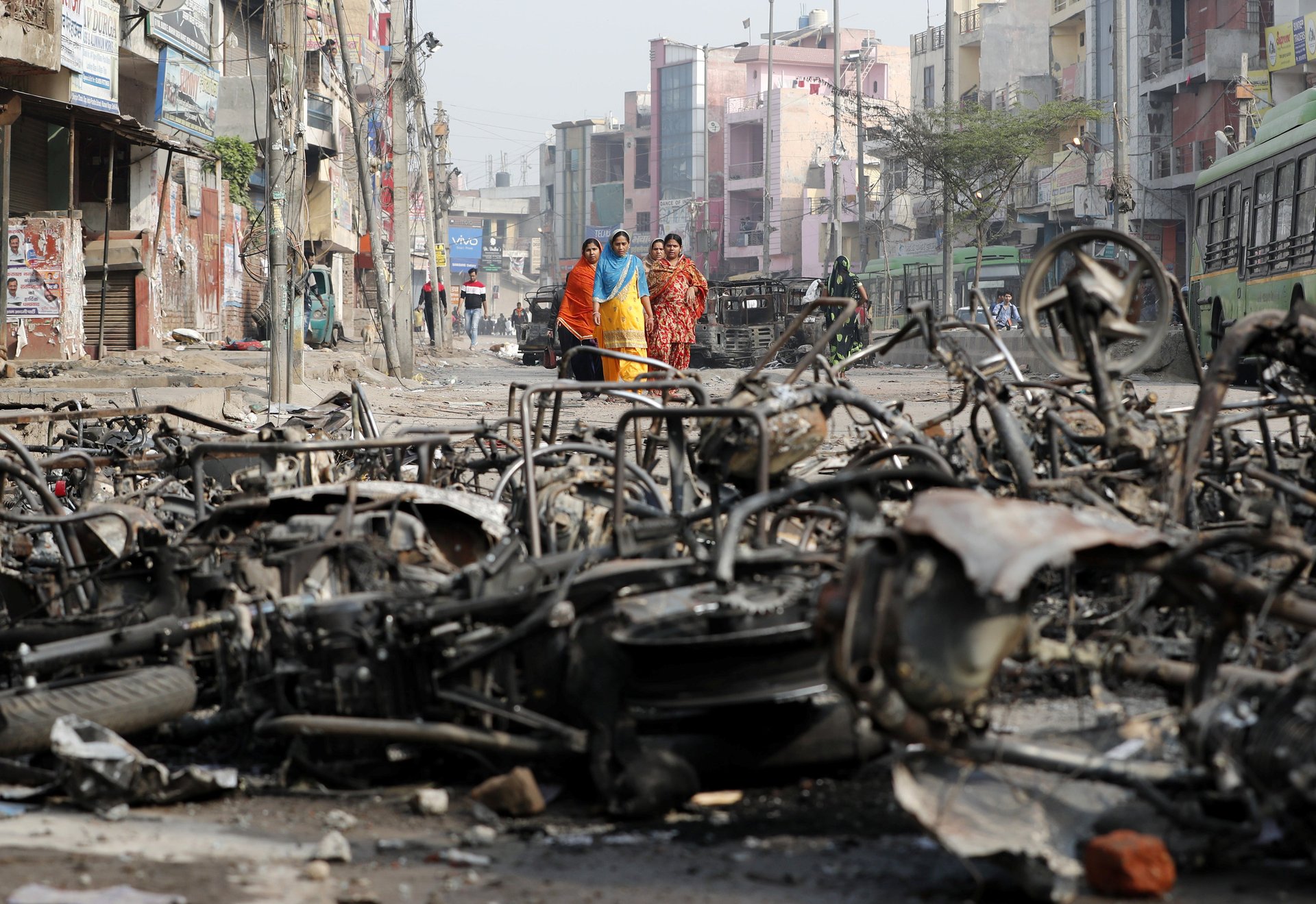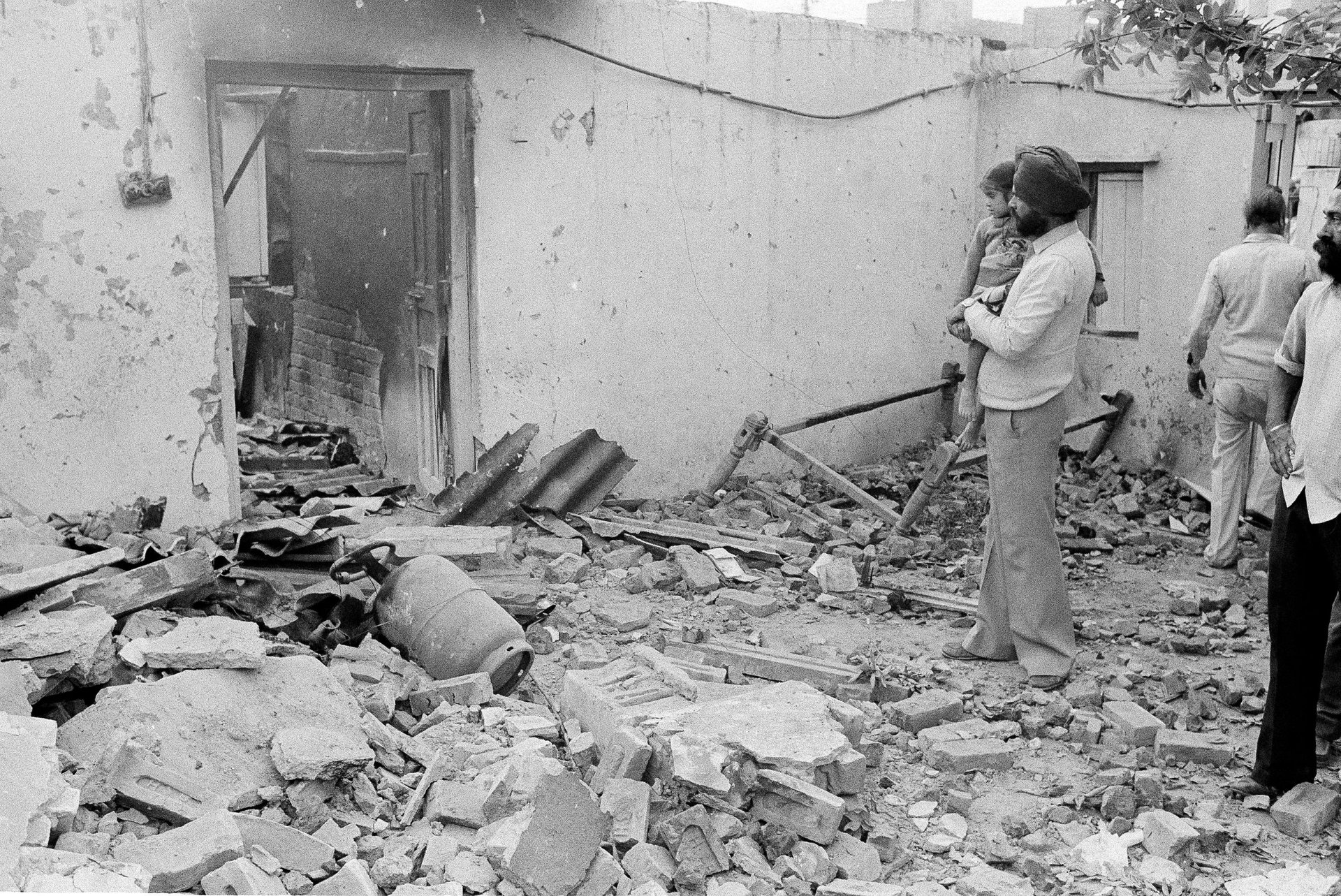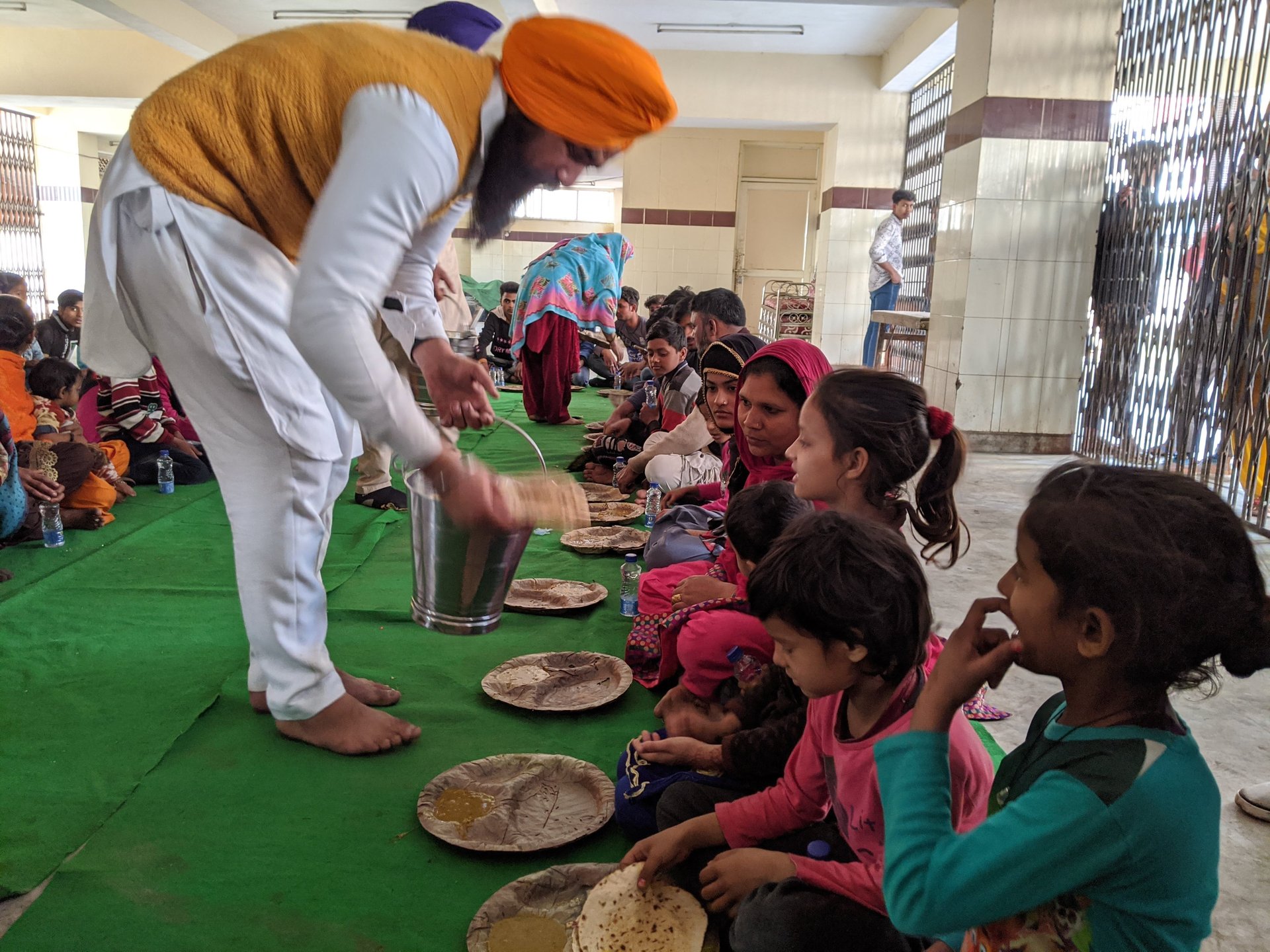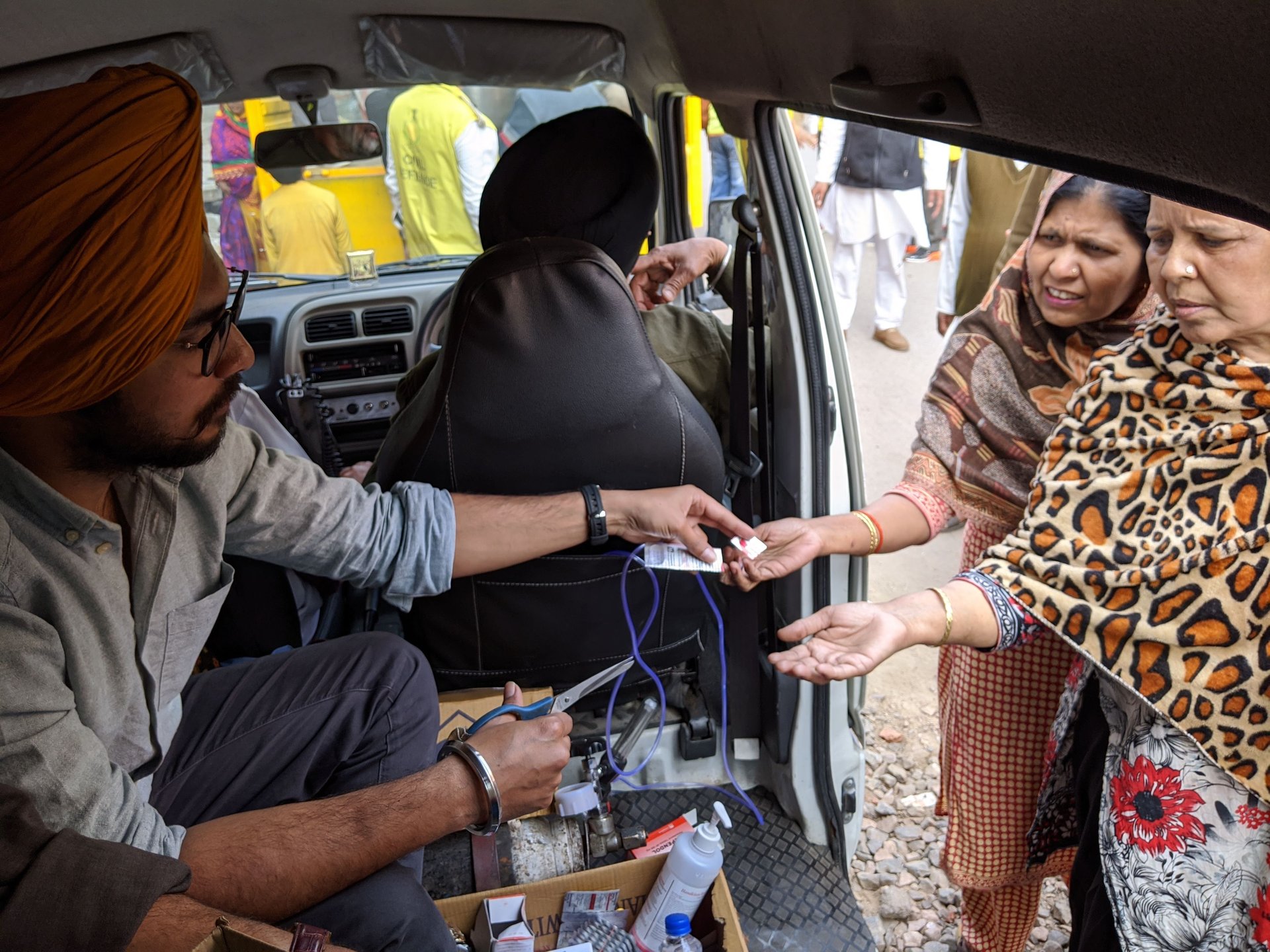Religious zeal shattered Delhi’s lives and dreams. Religious zeal is now picking up the pieces, too
Here, in the chilly air of the morgue, where the sharp smell of formaldehyde cuts through the odour of blood and the buzz of an overworked air conditioner drowns out the howls from without, they are finally equal.


Here, in the chilly air of the morgue,
On cold concrete slabs they lie…
Which God won, I don’t know
Do you?
—Message circulating on WhatsApp, Anonymous
Inside a dimly-lit hall in northeast Delhi’s Sri Ram colony, a dark-skinned man with a greying beard sat on the floor wailing. An untouched plate of dal-roti (lentils and Indian bread) lay near as a small crowd gathered around him. People gently caressed his head to pacify the man who seemed to be in his 60s.
Nearby was a woman in her 40s, head weighed down by what could only be an unimaginable loss. A henna-painted hand eclipsed part of her weary face as her bosom heaved with each silent sob.
A little away, a young mother alternated between taking a bite of roti and feeding her infant—the duo’s first proper meal in days.
More such inconsolable souls made up rows and rows of uprooted Delhi residents, now sheltered temporarily at the colony’s community centre in Northeast Delhi.
“We’ve watched everything we had burn down in front of our eyes,” 30-year-old Nigaar said, fighting back tears, when Quartz visited the region yesterday (Feb. 27). Two days ago, she said, “They came, turned off all the lights, and started burning.”
It’s been five days since one of the worst communal riots of the city-state’s history gripped this area, and already nearly 40 people have died, over 200 injured, and millions emotionally scarred for life.
The fires set by rod-wielding mobs amid aggressive religious chants may have died down by now, but, like always after such upheavals, the embers of anger, defeat, and uncertainty refuse to fade.
Together with those of the other such rudely disrupted lives, Nigaar’s wails will keep these embers alive for a long time to come.
“They came and looted everything”
Most residents of the Muslim-dominated Garhi village in northeast Delhi are now homeless, their houses completely gutted on the night of Feb. 25.
Several of them are now at the community centre at Sri Ram colony.
Wearing a red-and-black dotted salwaar kameez, head covered with a dupatta, one female inmate said: “I have a daughter. We had saved up for her marriage, they came and looted everything.”
A 26-year-old, sobbing and waiting to be heard, said, “One man grabbed onto my hand…I freed myself and ran away.”
The mobs “weren’t allowing media to come in,” said another. “Reporters were also being targeted, it’s been equally terrifying for you,” she said. Her instinctual offer of solidarity, topped with a sad smile, seemed surreal and ironic given the circumstances.
“Repeat of 1984”
“This is just a repeat of 1984,” said a female resident of Khazoori Khas, which till the night of Feb. 26 was lined with vehicles torched during the widespread arson. “I don’t need any food,” she said, anger lacing her voice. “All our shops have been torched, who will bear the cost of that?”
The “1984” motif was repeated by others, too.
“What is happening to Muslims today happened to Sikhs in 1984,” said Minna Singh, a relief volunteer feeding the famished multitudes of the locality. “I lost four brothers back then,” Singh, dressed in a fawn kurta, bright blue turban, and a kirpan (a traditional sword) slung across his chest, said softly.
The reference is to the pogrom against the Sikhs in northern India, especially in Delhi, in response to the assassination of then prime minister Indira Gandhi by her Sikh bodyguards. That burst of violence had left over 3,000 Sikhs dead in the capital alone, besides the thousands more killed in 40 cities across the country. The number of those injured and raped was equally gruesome.

Singh’s motivation to serve the riot-hit is mostly fuelled by his own horrific memories of those days.
Yet, food is not what the affected people truly need right now. What’s troubling them are the isolated incidents they still hear of—young Muslim boys being beaten up, chants of Jai Shri Ram, and clanging of swords and iron rods.
“I can’t begin to imagine what they’ve gone through, but we want to do whatever possible to ease the minds of people here,” said Sunil Kumar, an executive magistrate with the revenue department, who has been involved with the relief work in these areas.
A ray of hope
“Chalo chalo, aur dal leke aao. (Come on, get more dal),” said Raj Singh, who along with Minna Singh, was among the members of the Delhi Sikh Gurdwara Management Committee (DSGMC) helping those affected by the violence. DSGMC is an autonomous organisation that manages gurudwaras (Sikh place of worship) in Delhi. A total of 50 volunteers have now gathered under its banner to feed about 4,000 people.
“There’s only so much we can do…We don’t care if they are Hindu or Muslim. We Sikhs have been taught that our duty is to help those who are being oppressed, so we’re here just to serve,” 26-year-old Raj Singh said, pouring dal on to plates.

Outside the community centre, a bright yellow banner was seen hanging on a vehicle carrying provisions. It read: “This langar is not for any particular religion but for humanity.” Langar here referring to the public kitchen service that is a quintessential part of the Sikh religious tradition.
A number of medical volunteers, too, have been at it since morning, and have run out of stock by now.

“We’ll fill up on supplies and return tomorrow,” said Dr Milap Kamal Singh, offering just a small ray of hope at a time when all seems to be lost in the city.